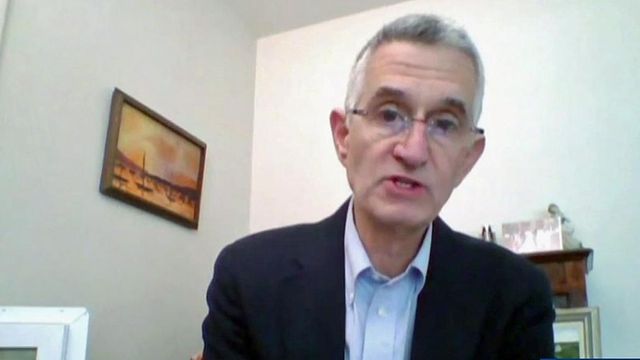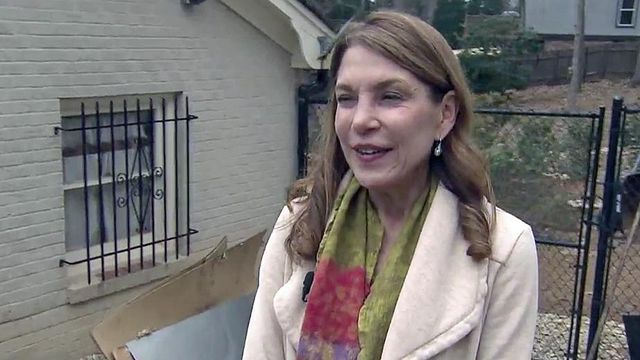'The next asbestos': Scientist says Low-E windows cause dangerous reflection
They're reflections from a window strong enough to melt siding on homes and even start fires. It's an issue with energy efficient windows that 5 On Your Side has investigated for years. Now, a forensic scientist has reached out to Monica Laliberte with concerns.
Posted — UpdatedIt's an issue with energy efficient windows that 5 On Your Side has investigated for years. Now, a forensic scientist has reached out to Monica Laliberte with concerns.
"I really believe that Low-E glass windows will be the next asbestos," Curt Freedman told 5 On Your Side.
Freedman is based in Massachusetts. He contacted Monica Laliberte after seeing the many stories she's done that ultimately changed North Carolina's building code.
Freedman started looking into the reflections after hearing from fire fighters.
A home in Somerville, Massachusetts caught fire three times in six years. Freedman went to the scene with investigators.
"It was a beautiful, sunny day and the subject home which previously had the fire -- it was smoldering," Freedman said.
They determined the intense reflection from the neighbor's Low-E windows, started the fires.
It's strongest on clear days, from south facing windows — in late fall, winter and early spring — when the sun is at a low angle.
While clear glass reflects about 10 percent of sunlight's energy, Low-E windows reflect 30 to 50 percent.
Freedman hopes his research and scientific findings provoke widespread change.
So far, no scientific data exists to link the window reflections to the fires.
"That is the overriding concern," Freedman said. "The intensity of the light is unsafe. Another goal that I have is to get this information in the hands of fire investigators so that they're able to recognize these situations, so when they have an incident they're able to address it."
WRAL Meteorologists are helping with the investigation. They provided extensive data about weather conditions around the times Low-E related fires started in North Carolina.
One near Charlotte, where bushes burned and landscape smoldered. Another outside Winston-Salem. The homeowner's surveillance cameras showed flames racing through landscaping and closing in on a propane tank. The fire reignited several times.
Freedman says his research shows the solar conditions over North Carolina, make us prime for Low-E problems.
"There are specific latitudes in the world where this is happening," he said. "Some of the most profound areas are right in the North Carolina area, right up to New England."
The reflections appear in an X shape.
A homeowner in Wake Forest sees them, and the damage they cause.
The siding on Stephanie McEwen's townhome was already replaced after melting from the reflections. Her siding melted again in January.
"I was surprised when people started talking about fires," said McEwen. "At first I was like no, but then when we started the temperature reading I realized -- totally possible. Completely possible."
She also measured the reflections. "It burnt my hand," she said. The day 5 On Your Side was at her home, the temperature measured 180 degrees.
In Massachusetts, with special equipment, heat levels registered even higher.
"We measured temperatures up to 480 degrees Fahrenheit," said Freedman.
5 On Your Side reached out to the Window and Door Manufacturers Association about the fires. Spokesman Jeff Inks said "tens of millions of low-e windows are installed ... each year in the U.S. and that they "are a durable, effective and affordable method to meet energy requirements."
He said "incidents are uncommon" and solar reflection "is not the only contributing factor." Inks added, "each situation should be assessed separately..."
Beyond the fire danger, Freedman believes the windows are a health concern.
"The intensity of the light is so strong that I believe it is profoundly dangerous for the safety of human eyes," he said.
Freedman cautions no one should ever look into the glare. But do look for telltale signs of Low-E trouble.
The reflections have already started a number of fires, and homeowners want something done.
"A known fire hazard lurking in neighborhoods through out the state, frankly, country for that matter," said Monda. "But it's causing fires in heavily populated, family neighborhoods. Yes, I find that to be a huge problem."
Related Topics
• Credits
Copyright 2024 by Capitol Broadcasting Company. All rights reserved. This material may not be published, broadcast, rewritten or redistributed.






